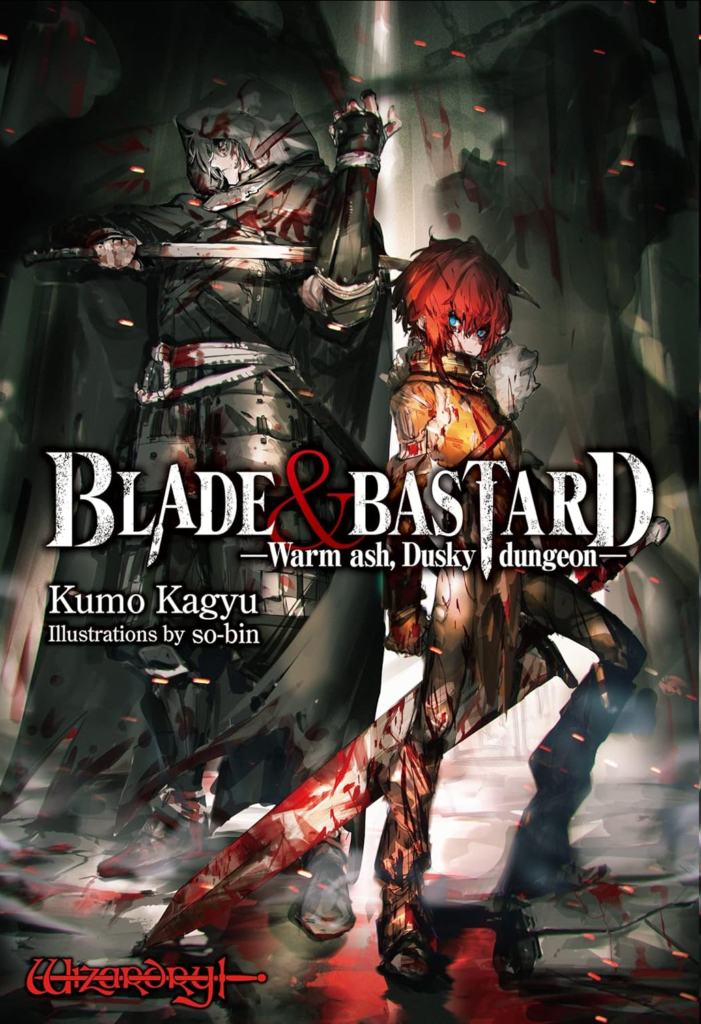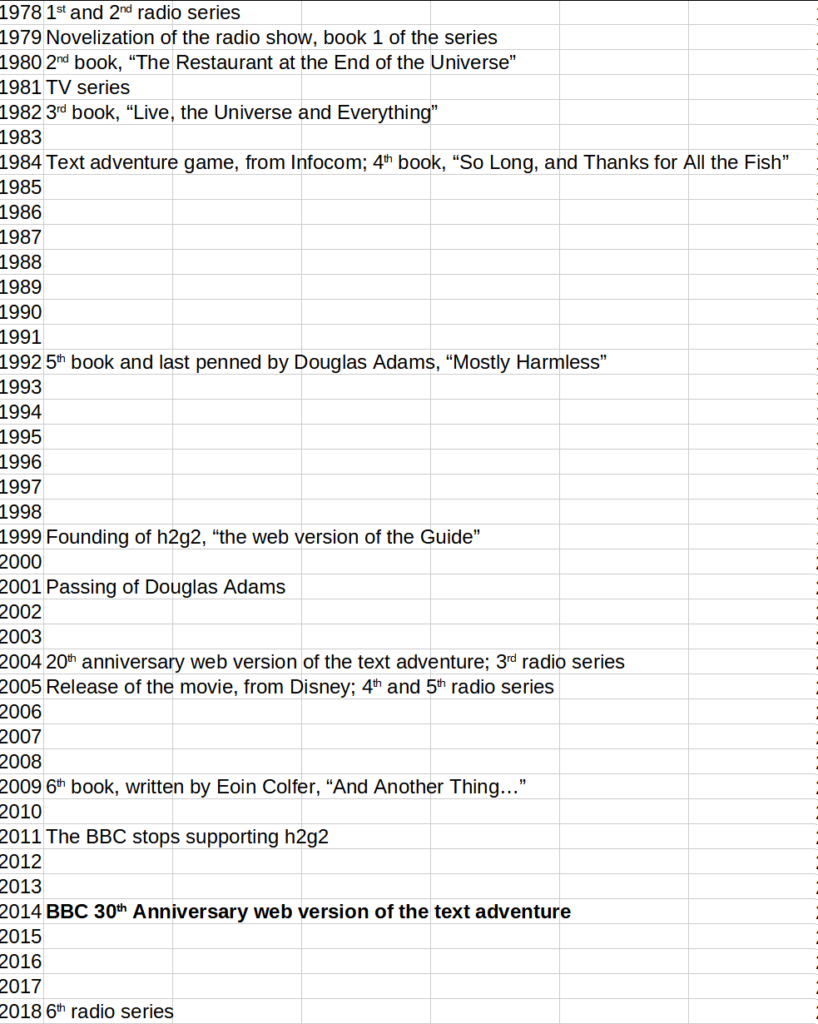
It occurs to me that it might be a good idea to explain what playing Wizardry is like. There was once a time when this basically was what a CRPG was. JRPGs obscured that greatly and became the new default, but before Final Fantasy took over the world, there was a whole pile of what we might now call Wizardry-likes: The Bard’s Tale series, Dragon Wars, Might & Magic, Dungeon Master, Eye of the Beholder among them.
All of these party-based CRPGs have a lineup, a list of characters that are generally considered to be in order. Dungeon Master arranges them in more of a 2×2 grid, but there’s still a front line and a rear. Key in all of these games is that the front line is where you should put your melee fighters, who are in substantially more danger and need more HP and equipment protection (often directly using the D&D term Armor Class). The rear is where the characters who can’t take a licking go: the thief and your mages. Clerics/Priests generally can go in either area. By tradition they they can still still use most armor, but the problem is they’re usually the party healer, so being in the front line also means they’re more likely to get taken out by Paralysis or Petrification, leaving the rest of the group in the lurch.
It’s vitally important that the front line holds. Characters who get knocked out will get automatically shuffled to the back of the group, putting the squishies in range of the monsters’ unkind claws and teeth. It might be possible to hurriedly cast some AC-increasing spells, but it’s usually just as fast to cast strong attack magic and end the fight, then cure the downed fighters in camp. If you can’t do that… well, then it’s best to find your way back to town by the most expeditious route.
What route might that be? Well that’s why you’ve hopefully been working on a map! You might have played labyrinth games before, or think you can rely on a spatial sense build from playing first-person shooters, but those are not going to suffice here, you need a map. The Digital Eclipse remake of Wizardry maintains one for you, but as previously said it can be “tricked” by two particular types of maze phenomena: spinners and teleporters. Spinners change your facing randomly but leave you in place; suitably, they’re almost always placed in four-way intersections, so it’s not obvious which why you’re now going, or even if you’re going back the way you came. Teleporters usually leave your facing the same, but now in a different location.
Once you’re in the dungeon, then what?
I said last time that you should make your own characters, but that will also leave them at experience level 1, which is really weak. Until you reach level 2, every expedition into the dungeon should contain a single encounter. The starting quadrant of the first level has just three rooms. Enter one of them, fight or run from the inhabitants, then run to the stairs. If you used any spells or took any damage, have the affected characters stay at the Inn. It takes a lot of stays to lose even one point of Vim, so it’s nearly free.
If you’re playing with the original Inn, then stays will be more expensive unless you stay at the Stables, which gets you your spells back and nothing else. But that’s okay, because you can then dip into the maze and have your priest cast DIOS on your injured. You can repeat that cycle as many times as you like, and it won’t even age your characters. It almost feels like cheating, but you want to push every advantage you have as far as it will go.
Get used to training up level 1 characters, you’ll be doing it several times. You’ll want a B-team of characters to rescue your main group if need be, a Bishop of moderate level to identify found equipment without paying Boltac’s insane prices, maybe a separate Evil/Good team if you want to try out a Ninja/Lord, and maybe characters to replace failed resurrections from ash. The only time you’ll have to train up a character unaided, though, is the first time.
It is true, one of the modernizations in the Digital Eclipse remake is the ability to outright hire characters of levels approaching your highest experience level reached, but it’s not free, and could end up being really pricey. If you’re broke, then you can’t hire anyone over level 1, and if you have no characters you won’t be able to earn more money. Also, you should know that there’s a limit of 20 characters you can have among all those you have at one time. I don’t know what happens if all of your characters are dead and in the maze at once. Seems like they should have accounted for that possibility, though.
How to handle those first fights
Use every advantage you have! Mages begin with the sleep spell KATINO, and while it’s almost useless later in the game it’s the key to surviving the first floor, that and the priest’s Dispel Undead ability.
There aren’t many monsters that can appear randomly on the first level:
Bubbly Slimes: the weakest monsters in the entire dungeon. They never flee and are immune to sleep spells, but are almost never a danger.
Kobolds: easy to beat unless they outnumber you. KATINO, the sleep spell, works quite well.

Orcs: Like kobolds but a little beefier. Both kobolds and orcs are very prone to running away if you’re even slightly above their level. Use KATINO.
Level 1 Rogues: Also weak and prone to fleeing, and vulnerable to KATINO.
Undead Kobolds: one of the very few (possibly the only) monster in the game with a description of “Skeleton.” For first-level groups kobold skeletons are pretty dangerous, all the numbers of kobolds but without their tendency to run away or vulnerability to sleep. You might be tempted to fight them hand-to-hand for the experience points, but this is just the kind of thinking that gets first-level parties slaughtered. You have a priest; they should be trying to dispel them every turn. (If you don’t have a priest then go right back to town and make one!)
Bushwackers: the horrors of the first floor, they do around a d8 of damage, making them deadly. If a group of first level characters encounters a group of Bushwackers without any KATINOs available it’s best to try to run. Bushwackers can be a problem even for 2nd level parties, but against higher level groups they’re just as prone to fleeing as their lower level compatriots.

Zombies: about one time in five, a group of Bushwackers will be generated with an assisting team of Zombies. This is by far the most dangerous encounter possible on the first floor, pretty much impossible for a first-level group to defeat without a lot of luck on their side. I’d have the priest try to dispel the Zombies, and use your mage(s) to cast KATINO on the Bushwackers. If you can get all the Bushwackers asleep, maybe use any remaining extra spell slots on HALITO on the zombies, but there is no really good way to survive this. Fortunately Bushwackers+Zombies is a rare combination, I’ve only seen it happen once on the first floor.
There is one more monster that can appear on the first floor….
Murphy’s Ghost
A beloved monster among Wizardry fans, and something of a legend in the annals of CRPGs, is Murphy’s Ghost. It’s a special encounter that can occur in one specific room on the first level of the dungeon. It’s in a region behind a secret door, so you might not find it until you learn the light spell MILWA, or possibly its longer-lasting version LOMILWA.
In the original, stepping onto its encounter spot was enough to make Murphy’s Ghost appear. Now you have to search to fight them. In both cases though the fight is easily repeatable.
On the first floor, Murphy’s Ghost can appear in groups of up to two. The fight isn’t that difficult, and even against low level characters it can’t do more than 4 hit points of damage every round. The main problem is that Murphy’s Ghost has a very low (that is, very good) Armor Class, at -3, and has many hit points. No attack magic works on the ghost, but spells that worsen its AC, or improve your characters’, work well. It takes around 40-50 melee attacks, on average, to fell a Murphy’s Ghost. One ghost earns 4,450 experience points, which split six ways it still over 700 XP apiece, and a pair of them can be enough to gain a whole level’s worth of experience at once. It is possible, rarely, to earn more experience from other groups on the first level, but Murphy’s Ghost has the advantage of only getting one attack per round, and of appearing every time its room is entered/it’s searched for, even if you just fought it a couple of moves before.
Murphy’s Ghost is slightly less useful in the Digital Eclipse version because the new unskippable battle animations take up a lot of extra time. It was always the combination of easy repetition, battle speed and relatively low difficulty that made fighting Murphy’s host appealing. After your group gets a couple of extra levels on their bones the first floor starts looking a lot less treacherous anyway.
















